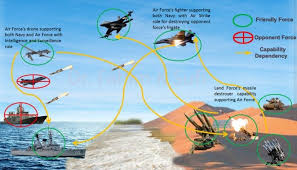The Role of Technology in Modern Warfare: A Dangerous Double-Edged Sword


In the 21st century, technological advancements have revolutionized the nature of warfare, offering both unprecedented advantages and grave dangers. From drones and cyber warfare to hypersonic missiles, nations can now wage war with greater precision and distance, often limiting human casualties on their side. However, this shift towards remote and automated warfare raises significant ethical concerns.
The use of drones, for instance, allows for targeted killings, sometimes based on minimal intelligence, and frequently without proper oversight or accountability. This opens the door to abuses, such as extrajudicial executions, that undermine international law. The use of hypersonic weapons further complicates this, as they can evade defense systems, causing massive destruction before any preventive action can be taken.
Moreover, cyber warfare adds another layer of complexity. Nations can now attack each other’s infrastructure without firing a single bullet. While these attacks can be less physically harmful, they target critical systems like power grids and financial networks, wreaking havoc in ways that can last far longer than conventional warfare.
DISCLAIMER: The author is solely responsible for the views expressed in this article. The author carries the responsibility for citing and/or licensing of images utilized within the text.
